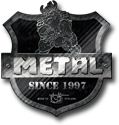Do not skip squat day!
Recently I made an experiment with deadlift training. I have been always training my deadlift as secondary to the squat, and it has always worked well for me. My squat has been my relatively best lift, and the deadlift has always followed the squat with an about 20 kilo difference, meaning a 200kg squat and a 220kg deadlift.
So, this autumn I tried to push my deadlifts, but decrease my squats, so I could focus on pulling. I did no squats for about two months straight! First time that ever happened! Training specifically the deadlift 2-3 times a week with maximal, dynamic and repetition methods. There has clearly been progress, very good progress in the musculature of my back and my sumo deadlift technique improved.
But the strength increases have not been dramatic even though my deadlifting volume has been relatively huge, and I do not feel I have overtrained. I have been recovered “enough” to train again, and my recovery has improved over the training cycle.
What has been missing from the formula is squats! It is THE powerlifting movement, because it is a sport performance in itself. It requires full body tension and control both in the descent and ascent as well. In the deadlift, you must only tense yourself maximally while lifting the weight and the weight is lower on your body meaning it takes less strain on your stability and coordination. You must lower a huge weight shaking on your shoulders to a difficult situation in the bottom of the lift and then reverse the movement. It builds strength more efficiently than the deadlift, even for deadlifting. You must deadlift, so that your upper body is able to hold the weights and that your technique is efficient. But to “build” your deadlift, squatting is in order. This propably goes for the bench press also. Many great benchers are also great squatters, and the leg drive and body tension needed for a strong bench press can be trained by squatting heavy.
What kind of squats to train? There are many versions now available for the powerlifter, for different specific needs. I believe the “ultimate” squat to improve your deadlift is a box squat with a safety squat or cambered bar. Front squats to a box, high bar squats to a box, or squats with a pause should be specific to deadlift strength also. The right placing of the bar and the weight distribution taxes your back and abdominal muscles very efficiently, and sitting down on a box creates a situation much like the deadlift, but with more tension and TIME under tension. Sets of three to six are great to build a strong squat, and squats can be trained often or only once a week. It depends on many factors. You may use chains to increase difficulty of the movement, but as a guideline keep the depth of your squats lower than your deadlift starting position. This way the transfer of strength should be the greatest, with good glute activation and overcoming difficult mechanics!
Keep training your deadlifts, but no need to train them very much or very often, unless you are “built” to deadlift and your body benefits greatly from the movement itself. Once or twice a week, and avoiding failure are the good rules of thumb. Some people shy away from multiple repetitions like 10 repetitions in the deadlift, but strongman training has proven that high repetition provide many benefits, as long as you are recovering properly. A set of 15 deadlifts is a brutal muscle mass builder for the back muscles, especially if lowering the bar is done under control.
Right now I am adding back my squats two times a week, both done with a safety squat bar and squatting to boxes. I have another meet coming in January and it will help me see how bringing back enough squats affects my deadlift performance.




No comments yet.